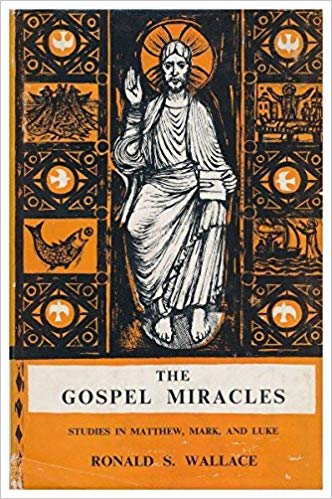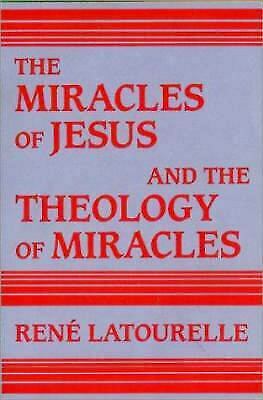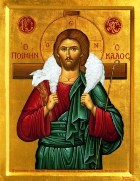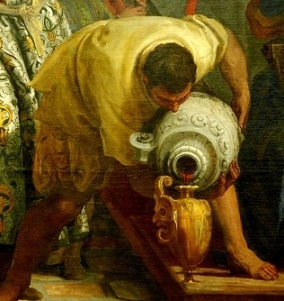Jesus cures the daughter of Jairus
‘And then at this critical time when his (the father’s) faith was beginning to wilt, there came the cry, “Why trouble to go on any further?” Some of his friends had been at the house. And their report was that the child was dead and it was too late and it seemed sensible to them to come and stop him from bringing this Teacher all the way now. “There came from the ruler’s house some who said, ‘Y our daughter is dead. Why trouble the teacher any further?”
 These were wise sane men, full of common sense. This was their considered opinion, for they wanted to help him. And this considered opinion of these wise sane practical decent men was calculated to shatter his last shred of hope and faith, and to put him forever off the track he had started on with Jesus. And their advice was so sensible that he would now be holding himself up for ridicule if he did not take it.
These were wise sane men, full of common sense. This was their considered opinion, for they wanted to help him. And this considered opinion of these wise sane practical decent men was calculated to shatter his last shred of hope and faith, and to put him forever off the track he had started on with Jesus. And their advice was so sensible that he would now be holding himself up for ridicule if he did not take it.
Why continue stupidly to hope? Why not now face up to the finality of the world’s practical judgment, and the reality of death, when death is death?
If Jesus had not been with him this would have been the end of all hope for Jairus.
But now a wonderful thing happened. Jesus stepped in to interfere and rescue Jairus’s faith from being destroyed by the world’s common sense and sanity. A battle began, a battle for faith against sensible decent public opinion. “Ignoring what they said,Jesus said to the ruler of the synagogue, ‘Do not fear, only believe.”
Jairus is told to ignore common sense, sanity, the wisdom of all his friends. “Do not fear, only believe.” Who is he to listen to? To which word has he to give place in his heart?’
Extract from The Gospel Miracles, Studies in Matthew, Mark & Luke, Ronald S. Wallace, Oliver & Boyd, 1960
In speaking of death Jesus uses a euphemism, as in the case of Lazarus: “She is sleeping.” In raising the child to life he uses only a gesture (“taking her hand”) and a command (“Arise”). Instead of looking for showy publicity, he imposes silence.
 The evangelists, who are writing long after the event and are therefore not bound by any such command, nonetheless retain the simplicity. They are conscious that here more than elsewhere they are reporting something utterly extraordinary….
The evangelists, who are writing long after the event and are therefore not bound by any such command, nonetheless retain the simplicity. They are conscious that here more than elsewhere they are reporting something utterly extraordinary….
There is no doubt in the minds of the evangelists, the members of the ruler’s family, and Jesus himself that they are confronted with a real death.
- In Matthew the ruler says: “My daughter has just died” (Mt 9:18);
- in Mark the little girl, initially described as dying, is subsequently said by the messengers from the household to be “dead.”
- Luke describes the situation in the same way.
Death is so certain that by the time Jesus arrives the ceremonial of weeping and lamentation is already in full swing. And when Jesus, according to all three evangelists, uses the euphemism: “The child is not dead but sleeping,” he is greeted with mocking laughter (Mk 5:40; Lk 8:53; Mt 9:24). Jesus and this man who is a ruler of his fellows are convinced that they are dealing with a real death.
If Jesus had played out a comedy by exploiting the everyday occurrence of a seeming death for his own ends, he would have discredited himself, and the tradition would not have dared to retain the story. When, then, he says: “The child is not dead but sleeping,” he does so in order to put a preventive damper on messianic excitement. In the case of Lazarus, who is not only dead but already decomposing, he will likewise say: “Our friend Lazarus has fallen asleep” (Jn 1=1:11). But the evangelist immediately explains: “Now Jesus had spoken of his death, but they thought that he meant taking rest in sleep” (John 11:13). The language is the same in both stories, and each time there is a reason for the euphemism…
Anyone who makes the unsupported claim that what we have here is a simple story of healing which has been transformed in the course of tradition into a resurrection story, and who goes on to say that it is a fictive resurrection symbolizing the resurrection of Christ, must either be reading the Gospels backward or be ignoring the rudiments of historical criticism.
Bultmann claims that it is impossible for a modern mind to speak of the raising of the dead to life.
I, on the contrary, believe that if the Absolute breaks through into the history of the race in order to save it, it is completely intelligible that this extraordinary goodness should find expression in unparalleled saving gestures such as healings, exorcisms, and raisings from the dead. Miracles are simply the good news of grace and salvation made visible: humanity made new, the world made new. That is how the apostles thought who were witnesses to Jesus.
The Miracles of Jesus and the Theology of Miracles, Rene Latourelle, Paulist Press, New York, p.126-7





